The subject of rising damp and how to solve it is surrounded by considerable controversy. This is partially due to its complexity, partially due to ongoing misinformation.
Here are the most common misconceptions Use judgement and common sense in determine what is true for you.
Click on the titles to expand each section.
The amount of independent, third-party information about the existence of rising damp is really staggering, the phenomenon being well-documented since the 1840s.
On the other hand, references questioning the existence of rising damp are few and far between. These writings also lack scientific rigor and objectivity, being heavily opinionated.
1. Modern Academic Research Papers
There are hundreds if not thousands of university research papers from highly-trusted sources describing many aspects of rising damp in detail.
The world's largest peer-reviewed research platform, Elsevier ScienceDirect, at the time of this writing lists 579 peer-reviewed research papers about rising damp.
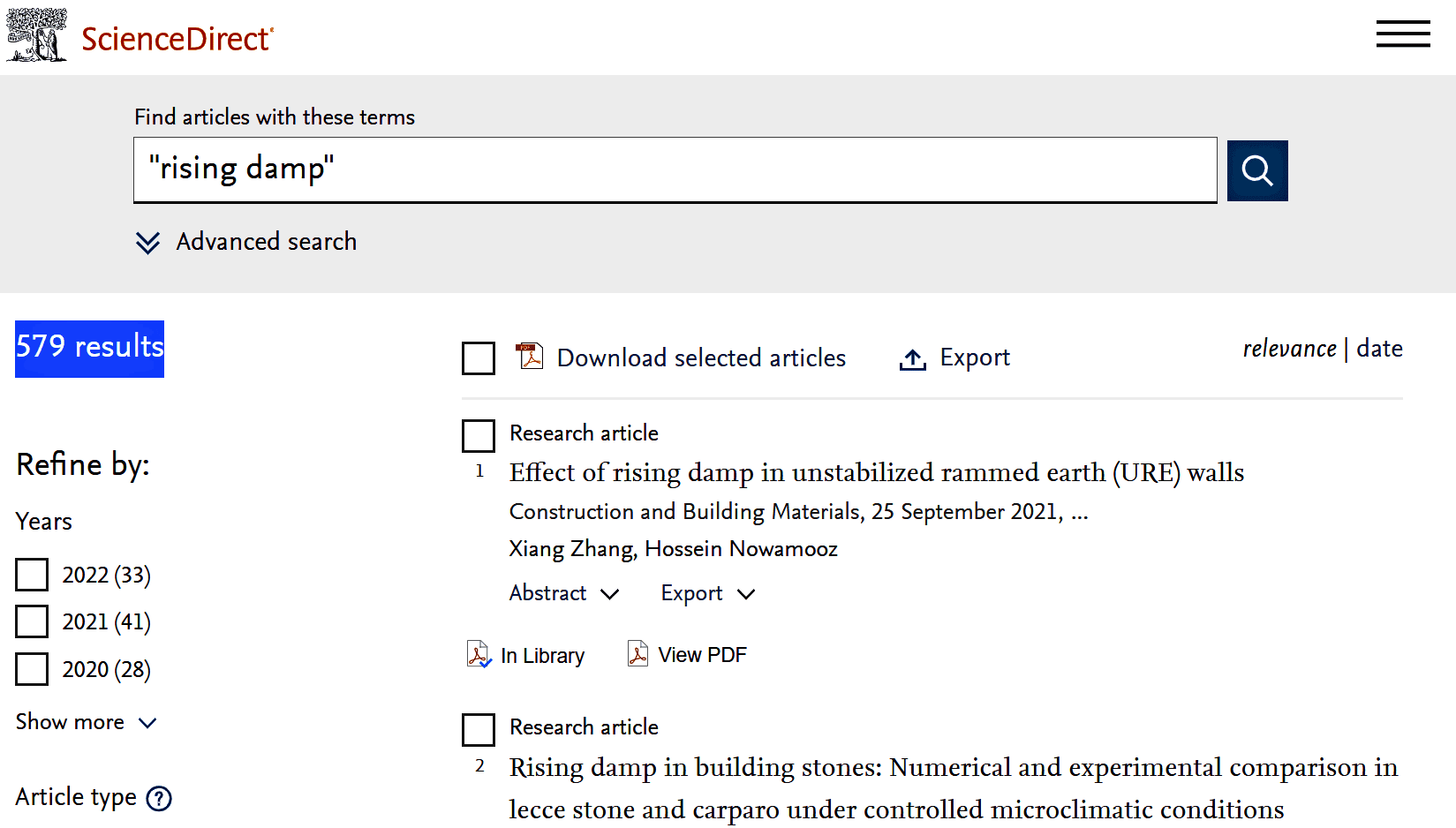
Another research portal, Web of Science, highly regarded by the academic community, lists 236 research articles on rising damp.

Here are a few research papers on rising damp with links to the original papers - some of them freely available while others by subscription only.
- Effectiveness of methods against rising damp in buildings: Results from the EMERISDA project, Journal of Cultural Heritage, 2018
- State-of-the-art on methods for reducing rising damp in masonry, Journal of Cultural Heritage, 2018
- Rising damp removal from historical masonries: A still open challenge, Construction and Building Materials, 2013
- Rising damp: capillary rise dynamics in walls, Royal Society UK, 2007
- Evaluation of mortar samples obtained from UK houses treated for rising damp, Construction and Building Materials, 2011
- Rising damp in historical buildings: A Venetian perspective, Building and Environment, 2018
- The influence of the thickness of the walls and their properties on the treatment of rising damp in historic buildings, Construction and Building Materials, 2010
- Efficiency evaluation of treatments against rising damp by scale models and test in situ, Journal of Cultural Heritage, 2018
- Mathematical analysis of the evaporative process of a new technological treatment of rising damp in historic buildings, Building and Environment, 2010
- New test methods to verify the performance of chemical injections to deal with rising damp, Journal of Cultural Heritage, 2018
- TDR-based monitoring of rising damp through the embedding of wire-like sensing elements in building structures, Measurement, 2017
- Geophysical and geochemical techniques to assess the origin of rising damp of a Roman building (Ostia Antica archaeological site), Microchemical Journal, 2016
- Evaluation of compatibility and durability of a hydraulic lime-based plaster applied on brick wall masonry of historical buildings affected by rising damp phenomena, Journal of Cultural Heritage, 2002
- Effects of rising damp and salt crystallization cycles in FRCM-masonry interfacial debonding: Towards an accelerated laboratory test method, Construction and Building Materials, 2018
2. Period Architectural References
Several architectural and professional books starting from the mid 1800s have described the problems of rising damp, also advising about the use of damp proof courses .
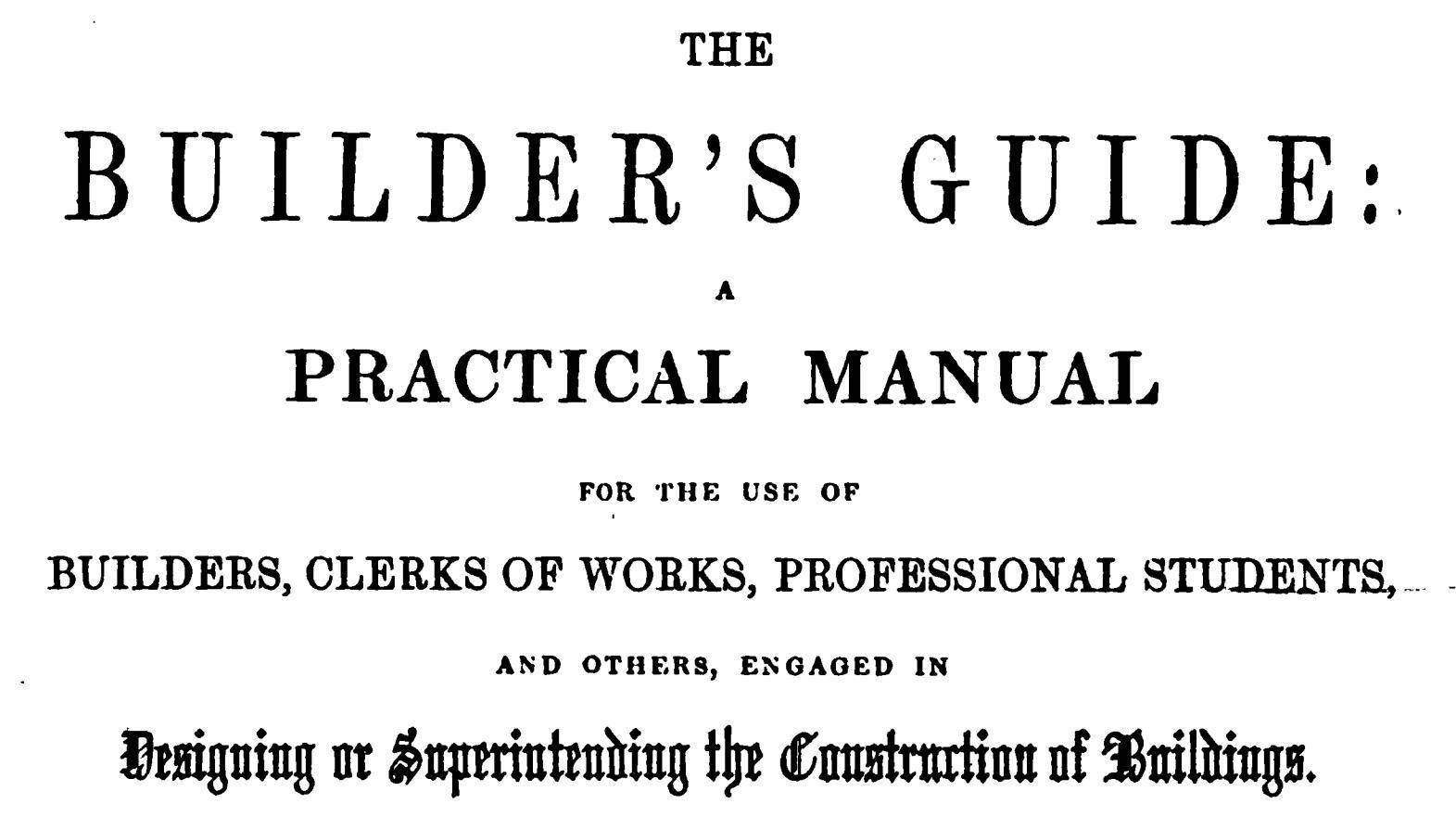
Here are some titles:
- 1844 - The Builder (architectural journal), Vol. II
- 1851 - The Builder's Guide: A Practical Manual (book)
- 1863 - Papers of the Royal Institute of British Architects
- 1873 - The British Medical Journal
- 1876 - Notes on Building Construction (book)
- 1885 - Helps to Health (health publication)
- 1891 - Public Health Act London
3. Period Book & Publications
Old books from the Victorian period have consistently documented that problems caused by rising damp were well-known in Victorian England for nearly 200 years, describing significant damages to period 16th - 17th century cottages and country houses.
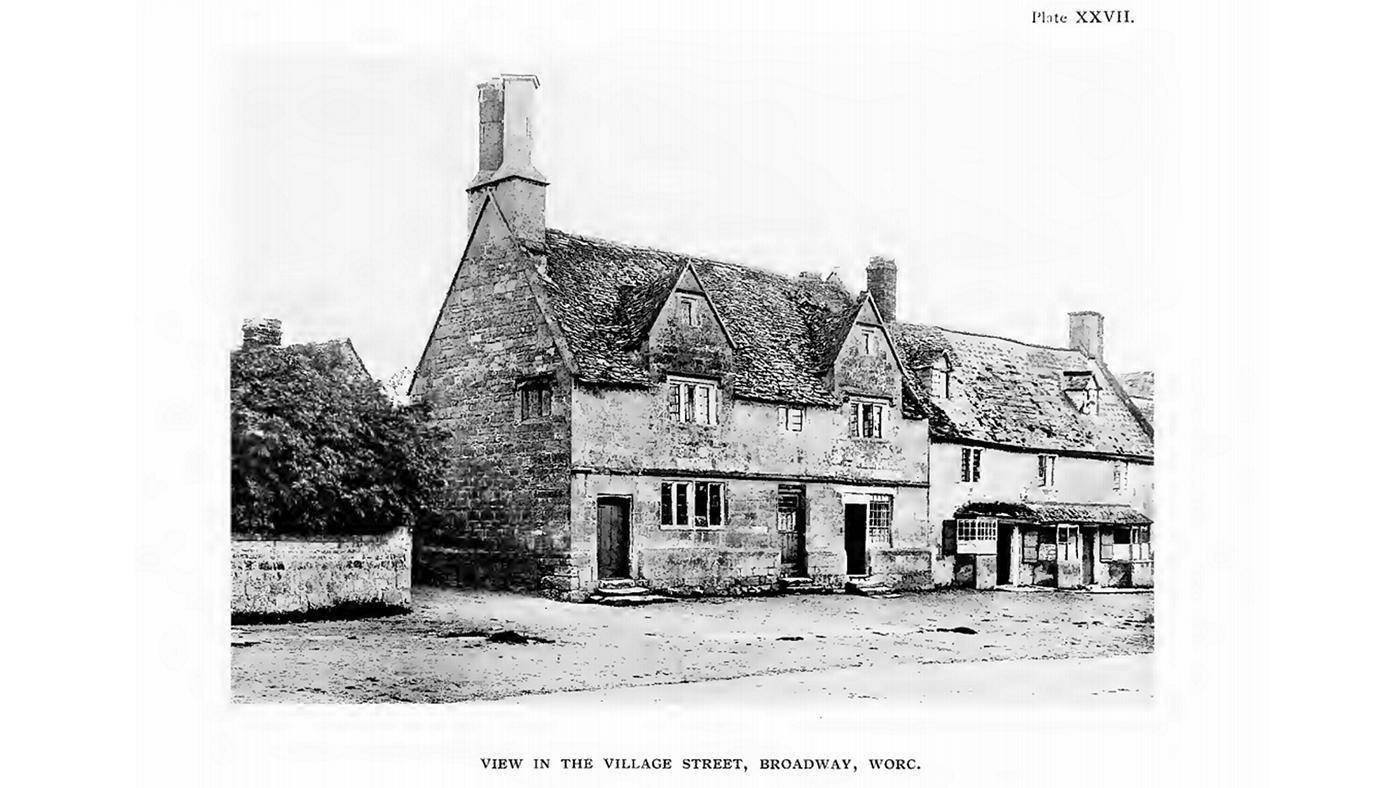
All these books and references are freely available from the Internet Archives as part of Google's old books digitization project, to be viewed or downloaded by anyone. Here are just a few relevant titles:
- 1851 - The Architecture of Country Houses
- 1870 - English Country Houses - A Practical Treatise on House Building
- 1905 - Old Cottages, Farmhouses & Other Stone Buildings in the Cotswold District
- 1909 - The Cottage Homes of England
- 1914 - Small Country Houses, Their Repair and Enlargement
- 1915 - Rural Housing
It is not - and here is why.
Rising damp and condensation have certain common elements as both phenomena involve vapour movement to some extent.
- Condensation is vapour-to-liquid transformation when vapours liquefy mostly as a result of low temperatures (cold).
- Rising damp is vapour evaporation from the soil into the building fabric.
Measurements performed on old buildings in wintertime have revealed an interesting detail: an old wall in depth is WARMER than on the surface, For e.g. in December, the depth of an old wall (red) was on average about 3°C warmer than the evaporative surface (blue).
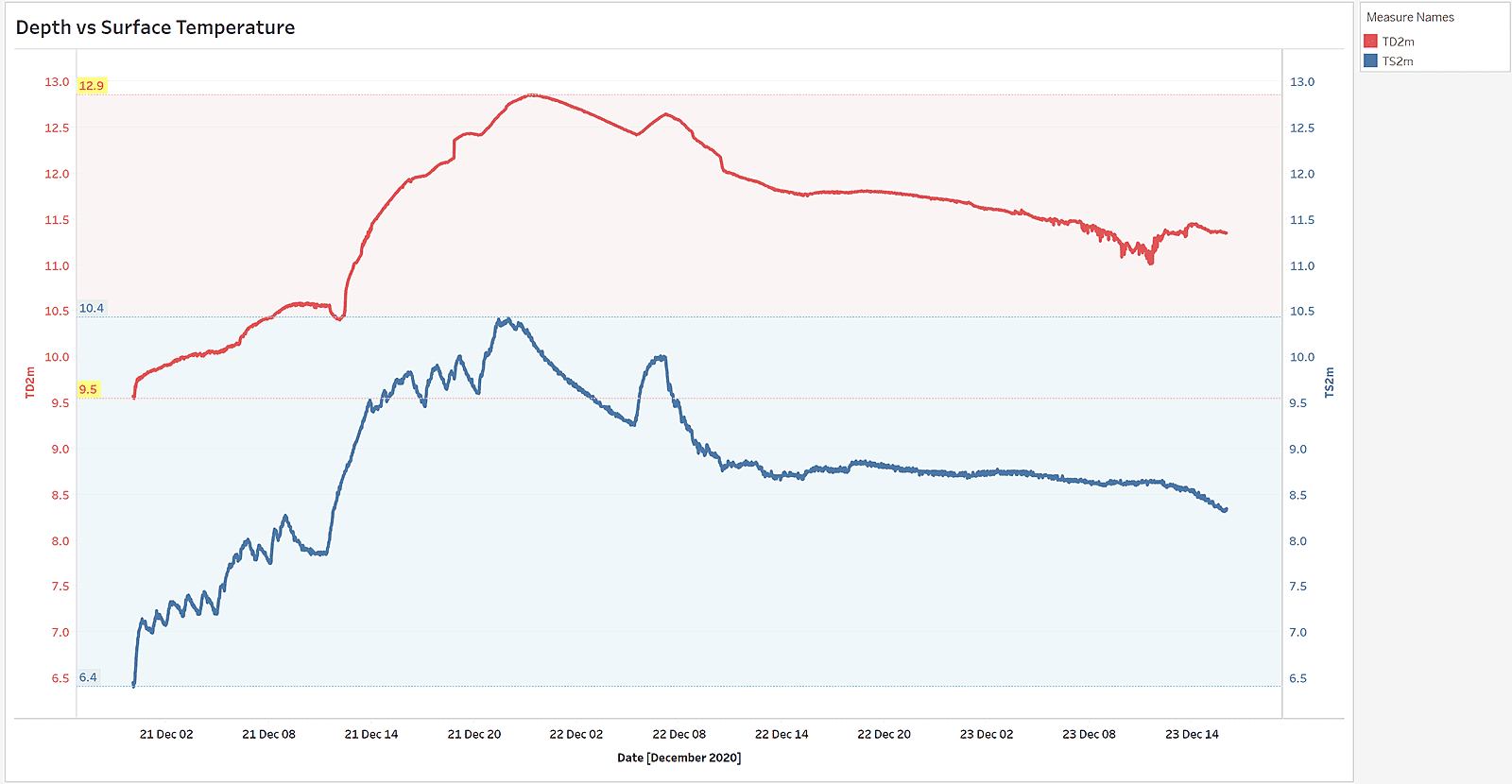
The depth of a wall (red) is warmer than its surface (blue)
This actually makes sense as walls store and retain heat due to their large mass. Similarly, the temperature of the soil below the surface is warmer than the surface - ground-source heat pumps utilize this principle to extract heat from underground.
The surface of a damp wall is usually coldest due to ongoing evaporation. Experimental measurement confirm this too: the depth of the wall (red) is over 3°C above the dew- or condensation point (yellow) - indicating that no condensation takes place inside this wall.
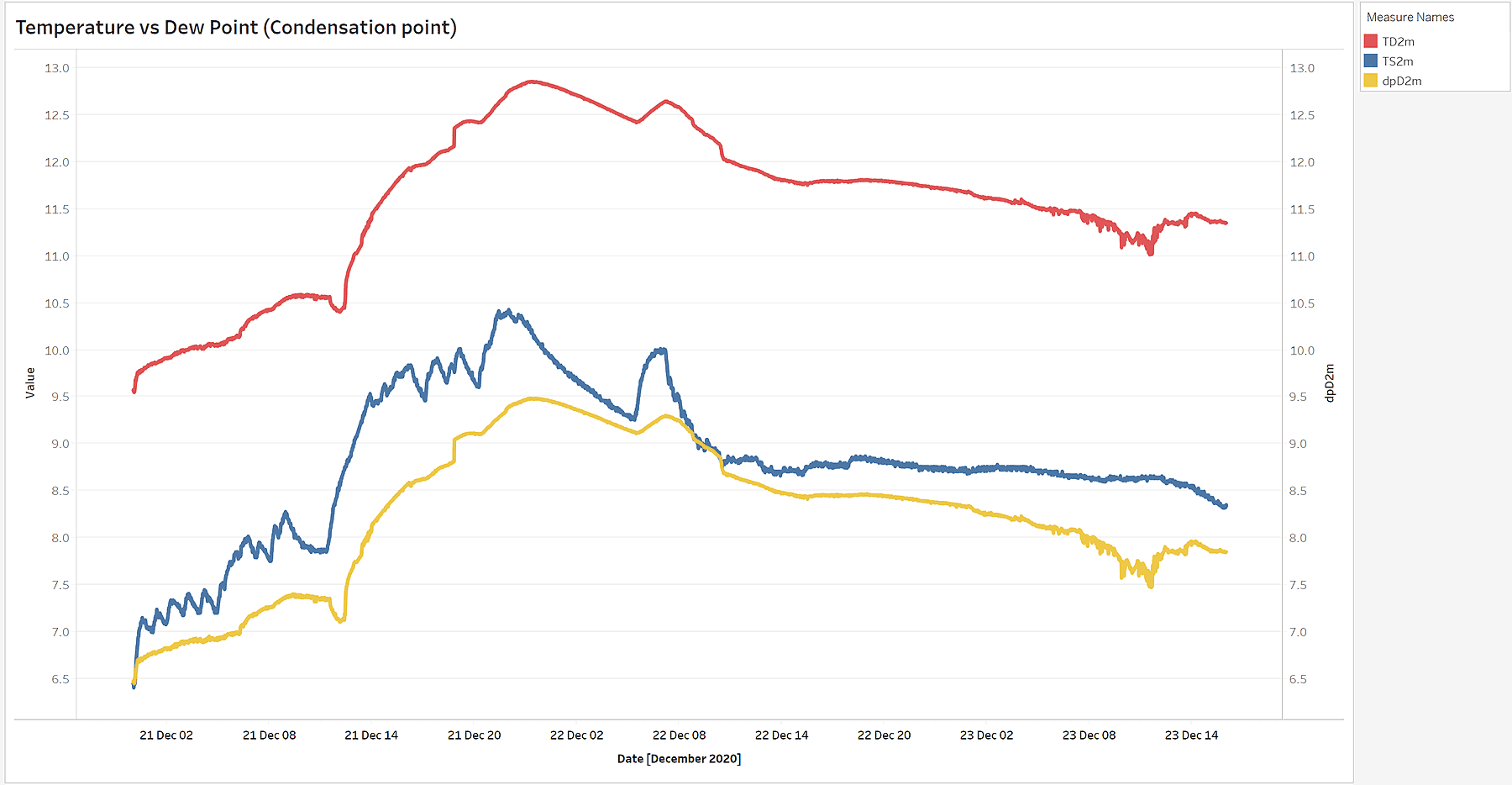
Temperatures vs Dew point (yellow)
Finally, we have also approached the problem from the opposite direction, taking it all back to a well-heated lab where no condensation can take place. Yet, we were able to reproduce rising damp here, in a condensation-free environment, which again indicates that the mechanism of rising damp is not condensation.
Despite some apparent similarities, rising damp and condensation are two different phenomena, caused by different mechanism. The differences between them are described in more detail here.
This is not true.
Rising damp is recreated in the lab routinely during various research projects. Many research papers publish photos of their experimental setups.
Here are some examples:
- Rising moisture, salts and electrokinetic effects in ancient masonries: From laboratory testing to on-site monitoring, Journal of Cultural Heritage, 2014
- Spontaneous electrical effects in masonry affected by capillary water rise: The role of salts, Construction and Building Materials, 2012
- An operative protocol for reliable measurements of moisture in porous materials of ancient buildings, Building and Environment, 2006
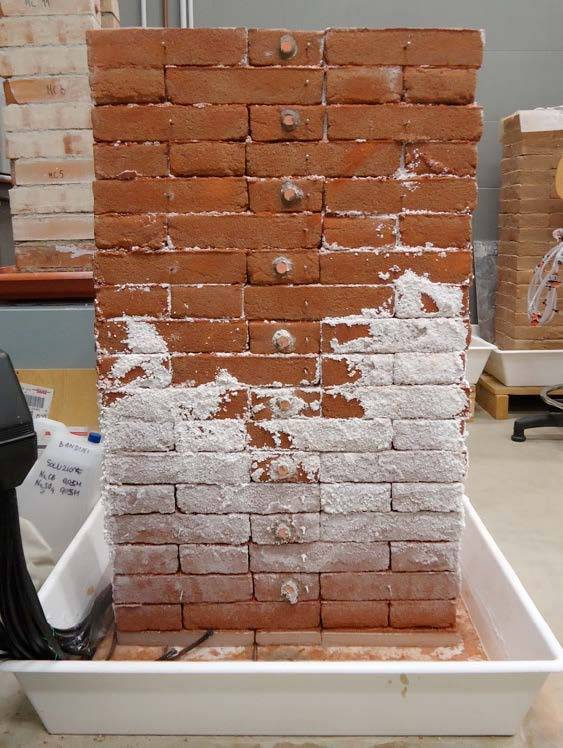
In fact, anyone can make water rise by placing some old-style porous bricks in a tray of water. The height of rise will depend on the type of bricks used - it tends to be higher in traditional bricks and lower in less porous, modern bricks fired at higher temperatures.
Here is a time-lapse video showing the speed of rise in old-style porous bricks.
The rise height of water in porous brickwork depends on several parameters, such as: the porosity and properties of the masonry, the thickness of the walls, the moisture saturation and salinity of the soil, the type and breathability of plaster used etc.
The maximum rise height can be calculated with formulas given in this research paper:
- Rising damp: capillary rise dynamics in walls, Royal Society UK, 2007
One of the important variables here is wall thickness. Thicker walls with large volume can absorb and retain a lot more water than thinner walls, thus the rising damp height also increases proportionally:
- 0.2 m wall thickness: 0.71 m rise height
- 0.5 m: 1.12 m rise
- 1.0 m: 1.58 m rise
- 2.0 m: 2.24 m rise
- 3.0 m: 2.74 m rise
Most residential buildings in the UK have walls under 0.5 m, hence the 1 metre rise height, based on observation, is correct.
The scientific literature, however, documents several well-known old buildings where the rising damp height is significantly higher.
- Church of San Bernardo in Rome: 4m thick walls, rising damp height of 5.3 metre. 1Hoff, W.D (2007).: Rising damp: Capillary rise dynamics in walls. Proceedings of the Royal Society. A Math. Phy. 463, 1871-1884
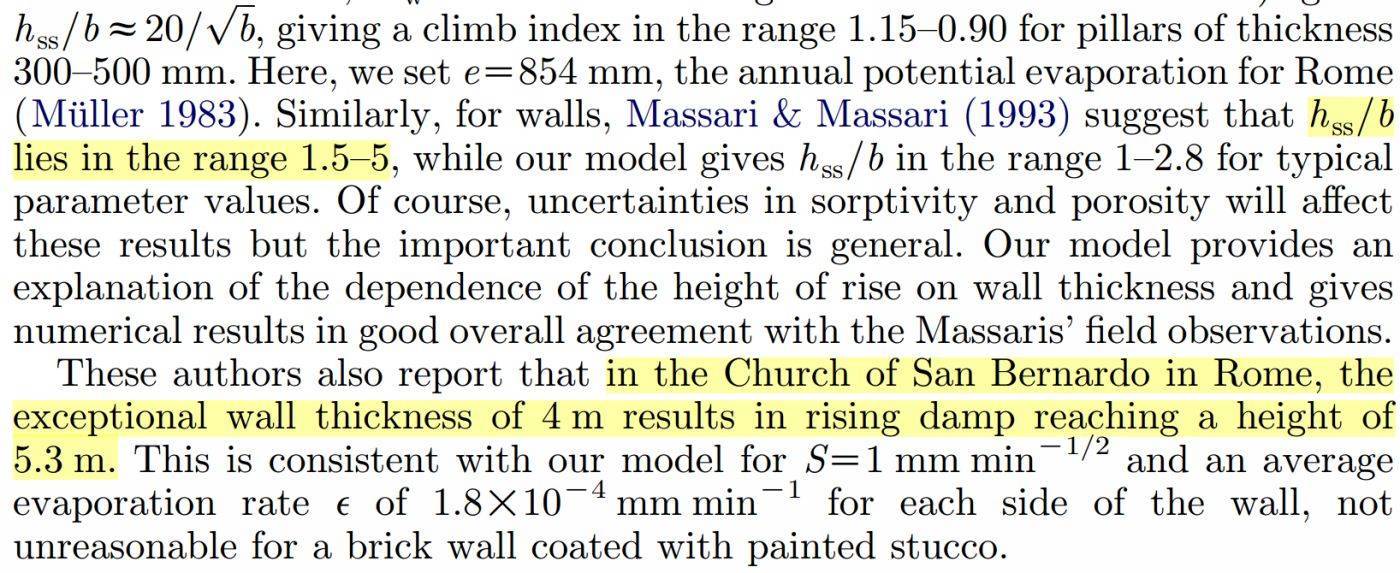
- Basilica of San Marco in Venice: up to 2m wall thickness with marble tiles, rising damp height over 6 metres. 2Franzoni, Elisa. (2014). Rising damp removal from historical masonries: A still open challenge. Construction and Building Materials. 54. 123-136.
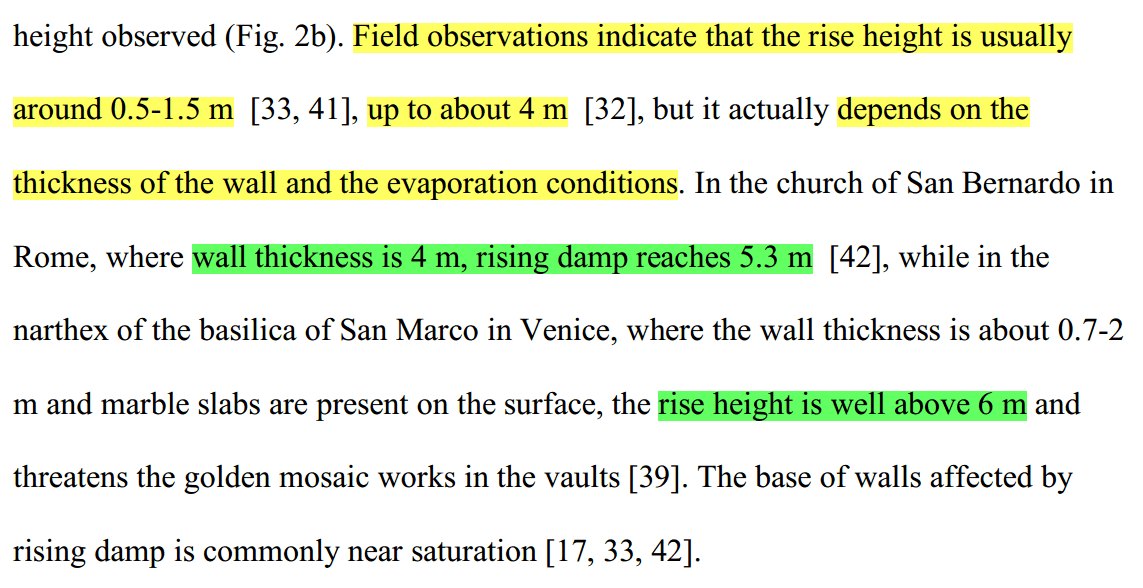
Old buildings need to breathe. “Breathing” is a colloquial term indicating that moisture can move freely in-and-out of the wall fabric. Breathing allows an old fabric to self-regulate its moisture content.
Non-breathable materials are not the cause of dampness problems. In order for them to create a dampness problem, an underlying moisture source MUST be present to make moisture accumulate. Without a moisture source nothing accumulates.
So, when investigating a dampness problem in conjunction with non-breathable materials, one must always ask the questions: “What moisture source is present that a non-breathable material can trap?” – then find it. There is always at least one.
Restoring breathability by removing non-breathable materials from the wall fabric is a big step in the right direction. This action often creates enough changes in the condition of old buildings to have the rising damp problem under control, for at least a while.
The restoration of breathability, however, is not a long-term or permanent solution to rising damp. Here is why.
Research has shown, that moisture accumulates even in a fully breathable wall fabric with no physical moisture barriers present. This occurs due to adhesion forces, caused by surface charges - tiny electrical charges on the wall surface that attract and trap vapour molecules.
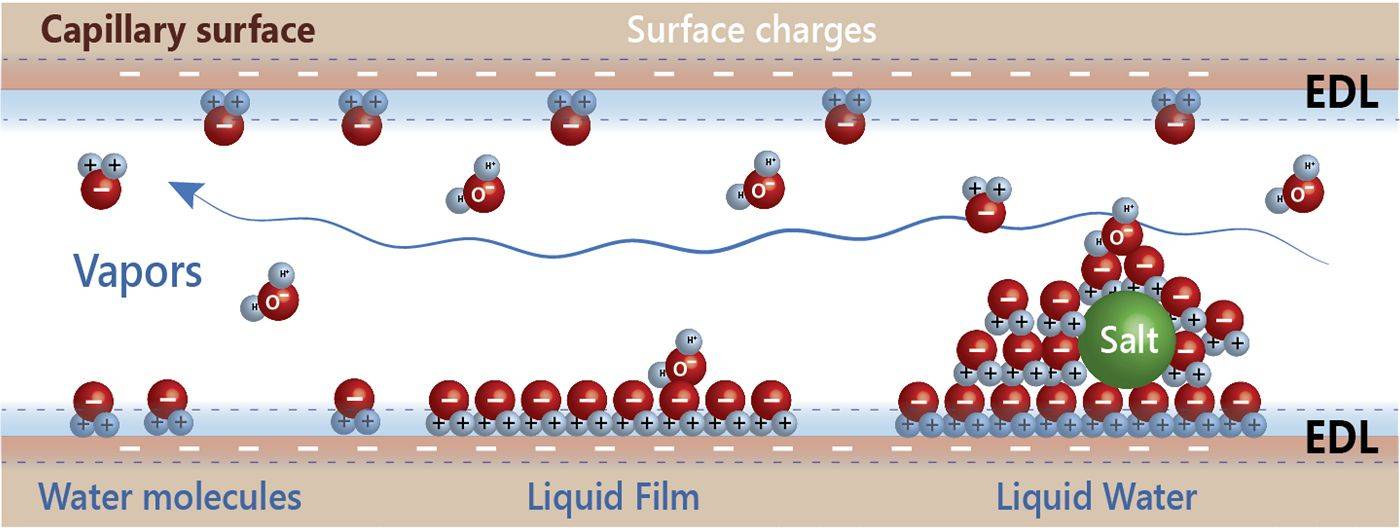
Moisture accumulation along capillary surfaces
The graph below highlights two distinct phases on the initial wetting of a perfectly dry, breathable wall fabric:
- Moisture accumulation phase: water vapours are trapped by surface charges, moisture accumulation starts along capillary surfaces. Depth humidity (blue line) increases up to 100% RH while surface humidity (green) stays at the level of ambient humidity (pink). No surface evaporation is taking place.
- Moisture evaporation phase: once the masonry has accumulated enough water to cancel out the surface charges, evaporation starts, surface humidity (green) starts climbing.
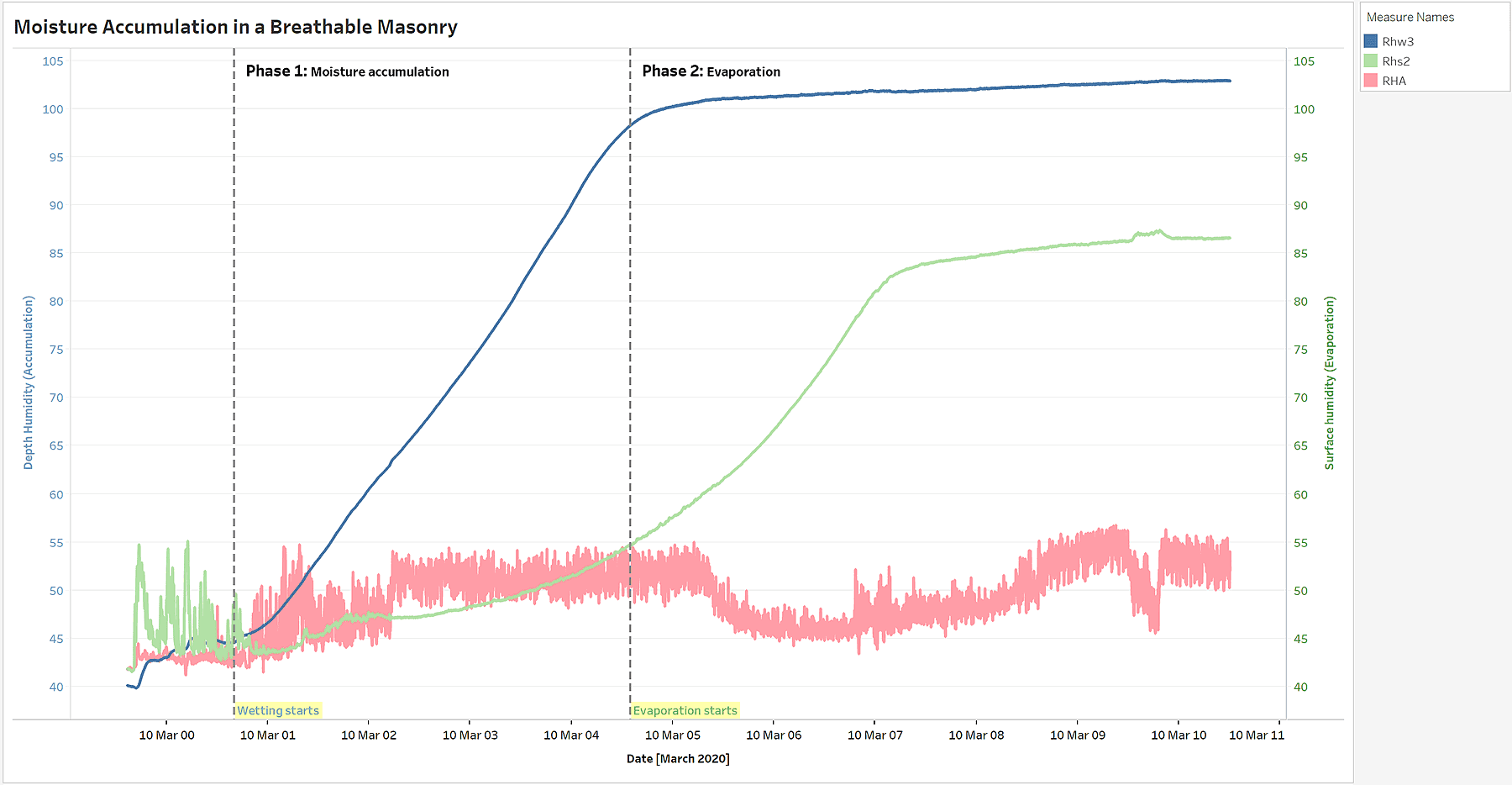
Moisture starts accumulating in a breathable masonry
With water movement, salts also start migrating up into the wall fabric, accumulating over time. The presence of salts, often in high quantities is a very distinct feature of rising damp,
Salts further trap humidity (hygroscopic action), making the evaporation of moisture even slower or more difficult.
While breathability works relatively well in a salt-free or low-salinity environment (e.g. at higher elevations, in presence of rainwater etc.), near ground level where increased salinity is present (e.g. from rising damp), the benefits of evaporation and breathability are limited.
Drainage in many cases improves rising damp problems because it decreases the moisture content of the soil, thus reducing the amount of moisture that can get into the walls.
Not all moisture is drainable. Drainage only removes the free moisture from the ground. The bound moisture content of the soil can't be drained - which is more than enough to keep rising damp going, as rising damp is not caused by capillary action but moisture evaporation from under the walls into the wall fabric.. Lab experiments have have proven this fact conclusively.
Moisture retention is further boosted by the presence of ground salts in the wall fabric, salts being an important catalyst of rising damp.
So drainage is a good idea, however it should not be regarded as a solution to rising damp, but only a means of ameliorating it.
The truth is tanking and membranes definitely DO NOT solve rising damp - they only make the problem worse in the long-run.
What tanking or membranes achieve is they seal the surface, preventing the evaporation of moisture. As a result, that starts accumulating behind the moisture barrier, moisture being channeled upwards or sideways.
Tanking and membranes are masking the dampness problem rather than solving it, being only an apparent solution - causing further dampness problems down the line.
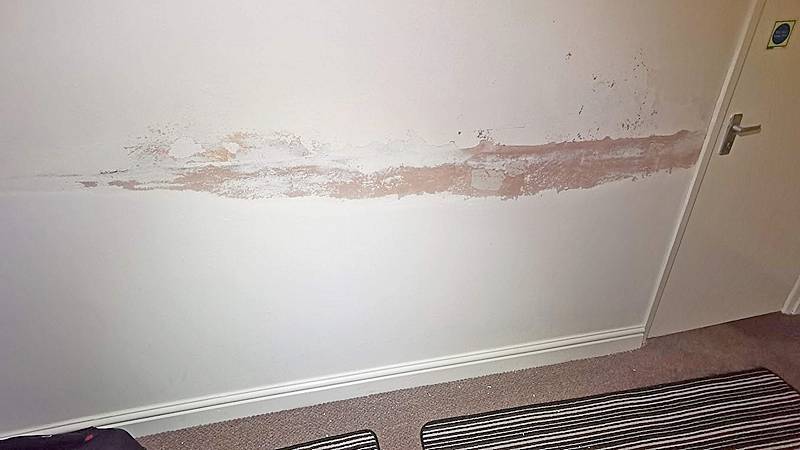
Horizontal line on the wall - membrane applied in the past channeled moisture upwards, leading to further damages above the membrane
They do - nothing lasts forever.
Damp proof courses (DPCs), just like anything in nature, are subject to aging and degradation. They are subject to immense pressure from the weight of the building, vibration, the corrosive effect of ground salts - just to name a few important factors influencing their long-term integrity,
Here are some examples of broken down DPCs observed in real buildings:
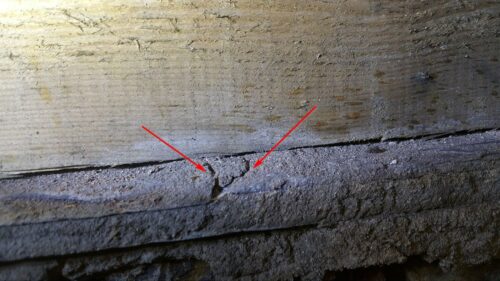
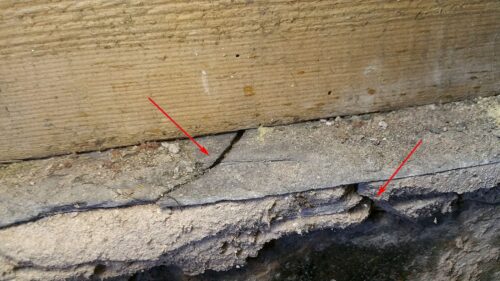
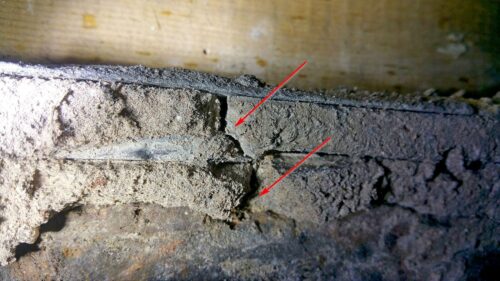
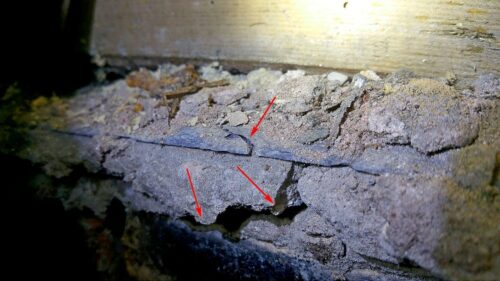
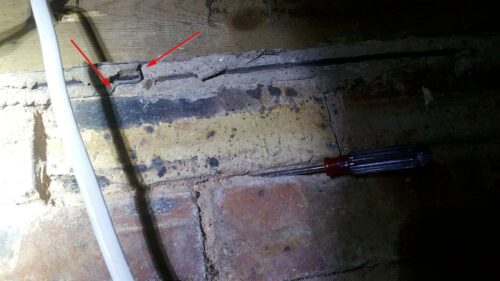
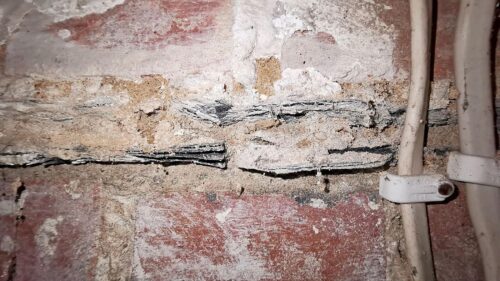
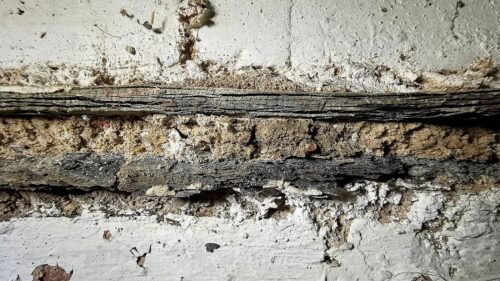
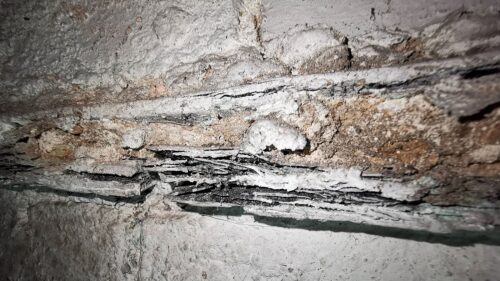
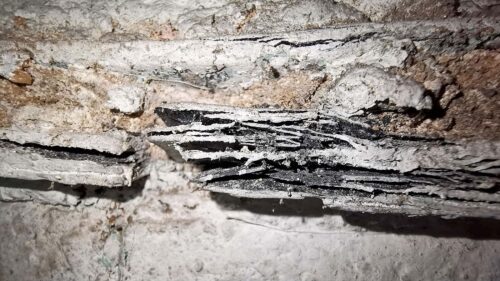
DPCs have been invented and continuously developed starting the early 1800s as a solution to prevent the rise and accumulation of moisture into the building fabric.
The latest technical research on rising damp has clarified that main role of a damp proof course is not to stop capillary action but to act as a horizontal vapour barrier, blocking the evaporation of moisture from under the wall into the wall - keeping the wall fabric dry long-term.
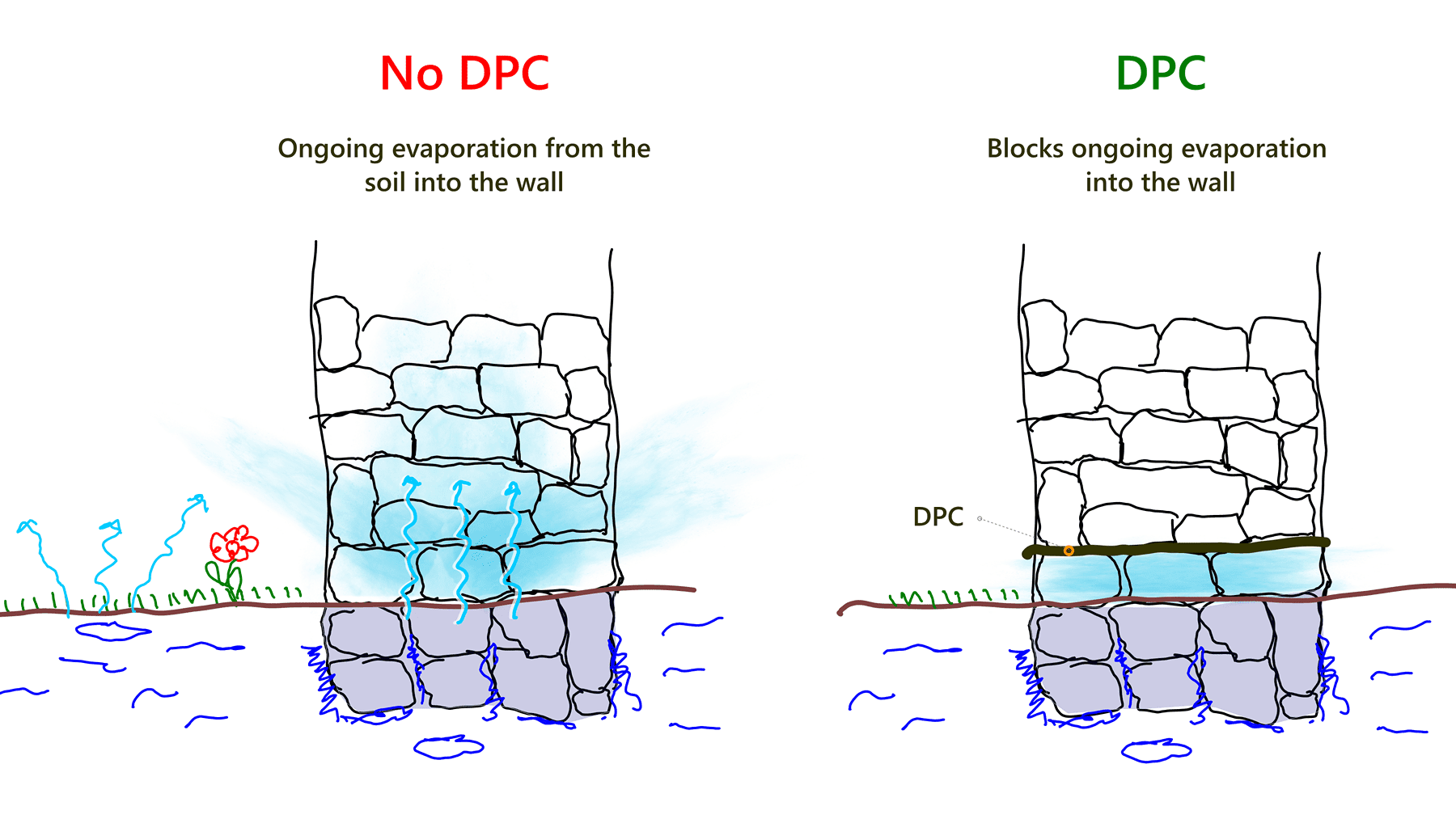
The role of a DPC is to block the evaporation of moisture into the wall fabric
As a result DPCs provide a very essential role in a building and as such, they are needed.
Drainage, heating and ventilation - although they all help - they won't replace a DPC and are not a substitute for it.
Although chemical injections might be too invasive for a listed building
maybe chemical injections, due to their invasive nature, are indeed not the best choice,
Consulting historical records will give us the true story of damp proof courses.
According to existing literature, rising damp seems to be a wide-scale problem affecting much more than just Britain.
USA
Here is an article from the Old-House Journal, a USA magazine devoted to restoring and preserving old houses.
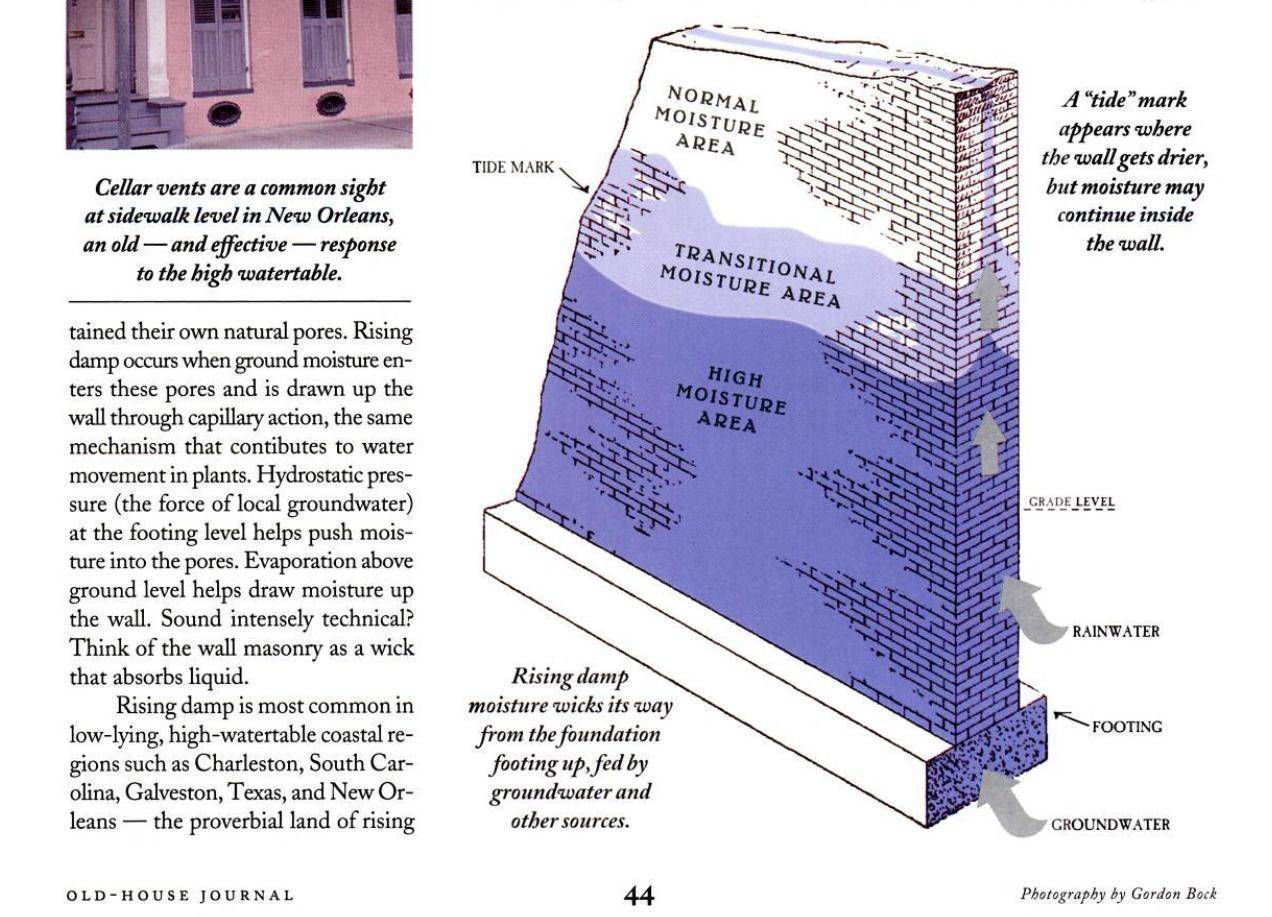
In an article about rising damp, some Southern US states - Texas, South-Carolina and New Orleans - are called "the proverbial land of rising damp".
"Rising damp is most common in low-lying, high-watertable coastal regions such as Charleston, South Carolina, Galveston, Texas and New Orleans - the proverbial land of rising damp. (...)
The symptoms caused by rising damp have been recognized for centuries, and its general action has been understood for close to 150 years. (...) In the "Architecture of Country Houses" (1850) A. J. Downing how foundation walls laid with lime mortar absorb moisture from the soil, particularly damp soil."
Europe
Here is a research article, jointly published by Belgian, Italian and Dutch universities and heritage agencies, calling rising damp "a recurrent hazard to ancient buildings in Europe".
Venice, Italy
DPCs are also used in Venice. Here is a quick video compilation about some of the different types of DPCs we observed during our conservation workshops in Venice.
References
| 1 | Hoff, W.D (2007).: Rising damp: Capillary rise dynamics in walls. Proceedings of the Royal Society. A Math. Phy. 463, 1871-1884 |
|---|---|
| 2 | Franzoni, Elisa. (2014). Rising damp removal from historical masonries: A still open challenge. Construction and Building Materials. 54. 123-136. |














